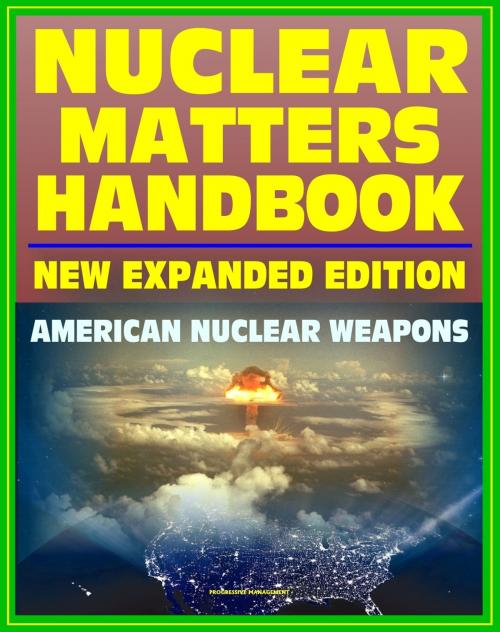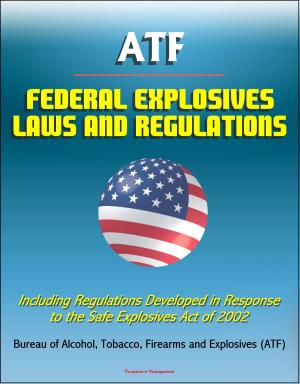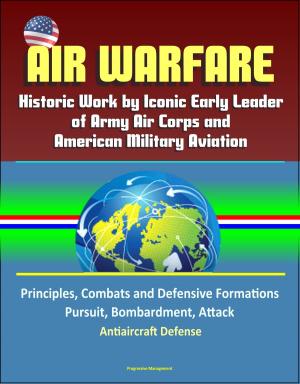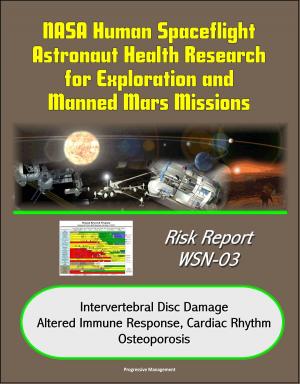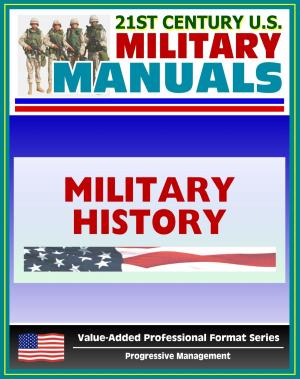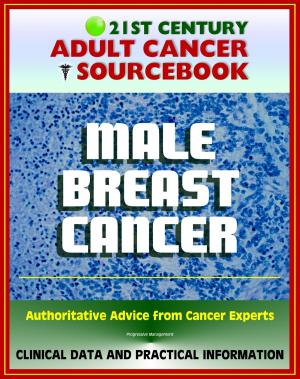Nuclear Matters Handbook, Expanded Edition: Guide to American Nuclear Weapons, History, Testing, Safety and Security, Plans, Delivery Systems, Physics and Bomb Designs, Effects, Accident Response
Nonfiction, Science & Nature, Science, Physics, Nuclear Physics, Social & Cultural Studies, Political Science| Author: | Progressive Management | ISBN: | 9781476151892 |
| Publisher: | Progressive Management | Publication: | March 30, 2012 |
| Imprint: | Smashwords Edition | Language: | English |
| Author: | Progressive Management |
| ISBN: | 9781476151892 |
| Publisher: | Progressive Management |
| Publication: | March 30, 2012 |
| Imprint: | Smashwords Edition |
| Language: | English |
Newly expanded and revised for this 2011 professionally-formatted ebook edition, this is an authoritative guide to American nuclear weapons providing a comprehensive description of all facets of the history and current status of the nuclear arsenal, plus background data on bomb design and weapons effects.
The Nuclear Matters Handbook is an expanded and revised version of the earlier Nuclear Matters: A Practical Guide ebook. It can be read cover to cover for those who seek to understand the U.S. nuclear program in its entirety, and can also be used as a reference source to look up useful facts and information concerning specific areas. The book is divided into chapters and appendices; the chapters present an overview of the U.S. nuclear program as a whole, while the appendices provide supplementary information on related topics for those less familiar with the subject matter.
Chapter 1 - Nuclear Matters History and Policy * Chapter 2 - Stockpile Management, Processes, and Organizations * Chapter 3 - U.S. Nuclear Force * Chapter 4 - Nuclear Command, Control, And Communications System * Chapter 5 - Nuclear Safety and Security * Chapter 6 - Countering Nuclear Threats * Chapter 7 - U.S. Nuclear Infrastructure * Chapter 8 - International Nuclear Cooperation * Appendix A - Nuclear Weapons Council and Annual Reports * Appendix B - International Nuclear Treaties and Agreements * Appendix C - Basic Nuclear Physics * Appendix D - U.S. Nuclear Weapons Life-Cycle * Appendix E - Nuclear and Non-Nuclear Testing * Appendix F - The Effects of Nuclear Weapons * Appendix G - Nuclear Survivability * Appendix H - Classification * Appendix I - Programming, Planning, and Budgeting * Frequently Asked Questions * Glossary / Acronym List
Contents include: U.S. Nuclear Weapons * History * End of Underground Nuclear Testing * Aging Warheads in an Era of No Nuclear Testing * Modern Safety, Security, and Control * Loss of Technical Expertise * Deterioration of the Nuclear Complex Infrastructure * Stockpile Quantities * Future of the Program * Life-Cycle of Weapons * Production Engineering * First Production * Retirement and Dismantlement * Force Structure * U.S. Defense Objectives * Employment of Nuclear Weapons * U.S. Nuclear Stockpile Composition * Nuclear Stockpile Quantities * U.S. Nuclear Weapons Delivery Systems * Bombers * Submarines * ICBM * Dual Capable Aircraft (DCA) * DoD Strategic and Non-Strategic Operational Bases * Nuclear Weapons Program Infrastructure * Complex Transformation * Nuclear Weapons Complex * Stockpile Stewardship Program * The Transition to a Science-Based Substitute * Stockpile Stewardship Program Elements * Surety * Dual Agency Surety Responsibilities * Nuclear Weapons System Safety * Security * DoD Nuclear Weapons Security Standards * DoD and DOE Personnel Security * Nuclear Command and Control (NC2) and Use Control * Quality Assurance and Non-Nuclear Testing * Surveillance Transformation Project (STP) * Stockpile Laboratory Testing (SLT) * Stockpile Flight Testing (SFT) * Safety Validation and Reliability Estimates * Nuclear Weapons Council and Annual Reports * Basic Nuclear Physics * Atomic Structure * Radioactive Decay * Nuclear Reactions * Fission * Fusion * Basic Weapon Designs * Achieving Supercritical Mass * Gun Assembly Weapons * Implosion Assembly Weapons * Boosted Weapons * Staged Weapons * Proliferation Considerations * Effects of Nuclear Weapons * Fireball * Thermal Radiation Damage & Injury * Thermal Radiation Employment Factors * Thermal Radiation Protection * Air Blast Damage & Injury * Ground Shock Damage & Injury * Surface Crater Damage & Injury * Surface Crater Employment Factors * Underwater Shock Damage & Injury * Initial Nuclear Radiation Damage & Injury
Newly expanded and revised for this 2011 professionally-formatted ebook edition, this is an authoritative guide to American nuclear weapons providing a comprehensive description of all facets of the history and current status of the nuclear arsenal, plus background data on bomb design and weapons effects.
The Nuclear Matters Handbook is an expanded and revised version of the earlier Nuclear Matters: A Practical Guide ebook. It can be read cover to cover for those who seek to understand the U.S. nuclear program in its entirety, and can also be used as a reference source to look up useful facts and information concerning specific areas. The book is divided into chapters and appendices; the chapters present an overview of the U.S. nuclear program as a whole, while the appendices provide supplementary information on related topics for those less familiar with the subject matter.
Chapter 1 - Nuclear Matters History and Policy * Chapter 2 - Stockpile Management, Processes, and Organizations * Chapter 3 - U.S. Nuclear Force * Chapter 4 - Nuclear Command, Control, And Communications System * Chapter 5 - Nuclear Safety and Security * Chapter 6 - Countering Nuclear Threats * Chapter 7 - U.S. Nuclear Infrastructure * Chapter 8 - International Nuclear Cooperation * Appendix A - Nuclear Weapons Council and Annual Reports * Appendix B - International Nuclear Treaties and Agreements * Appendix C - Basic Nuclear Physics * Appendix D - U.S. Nuclear Weapons Life-Cycle * Appendix E - Nuclear and Non-Nuclear Testing * Appendix F - The Effects of Nuclear Weapons * Appendix G - Nuclear Survivability * Appendix H - Classification * Appendix I - Programming, Planning, and Budgeting * Frequently Asked Questions * Glossary / Acronym List
Contents include: U.S. Nuclear Weapons * History * End of Underground Nuclear Testing * Aging Warheads in an Era of No Nuclear Testing * Modern Safety, Security, and Control * Loss of Technical Expertise * Deterioration of the Nuclear Complex Infrastructure * Stockpile Quantities * Future of the Program * Life-Cycle of Weapons * Production Engineering * First Production * Retirement and Dismantlement * Force Structure * U.S. Defense Objectives * Employment of Nuclear Weapons * U.S. Nuclear Stockpile Composition * Nuclear Stockpile Quantities * U.S. Nuclear Weapons Delivery Systems * Bombers * Submarines * ICBM * Dual Capable Aircraft (DCA) * DoD Strategic and Non-Strategic Operational Bases * Nuclear Weapons Program Infrastructure * Complex Transformation * Nuclear Weapons Complex * Stockpile Stewardship Program * The Transition to a Science-Based Substitute * Stockpile Stewardship Program Elements * Surety * Dual Agency Surety Responsibilities * Nuclear Weapons System Safety * Security * DoD Nuclear Weapons Security Standards * DoD and DOE Personnel Security * Nuclear Command and Control (NC2) and Use Control * Quality Assurance and Non-Nuclear Testing * Surveillance Transformation Project (STP) * Stockpile Laboratory Testing (SLT) * Stockpile Flight Testing (SFT) * Safety Validation and Reliability Estimates * Nuclear Weapons Council and Annual Reports * Basic Nuclear Physics * Atomic Structure * Radioactive Decay * Nuclear Reactions * Fission * Fusion * Basic Weapon Designs * Achieving Supercritical Mass * Gun Assembly Weapons * Implosion Assembly Weapons * Boosted Weapons * Staged Weapons * Proliferation Considerations * Effects of Nuclear Weapons * Fireball * Thermal Radiation Damage & Injury * Thermal Radiation Employment Factors * Thermal Radiation Protection * Air Blast Damage & Injury * Ground Shock Damage & Injury * Surface Crater Damage & Injury * Surface Crater Employment Factors * Underwater Shock Damage & Injury * Initial Nuclear Radiation Damage & Injury
